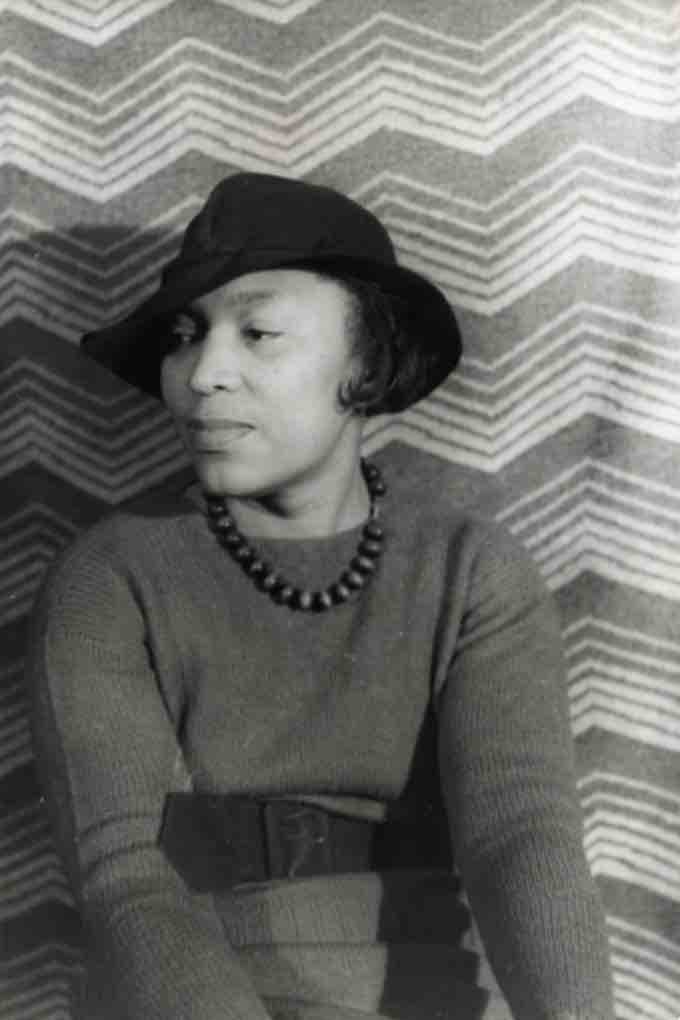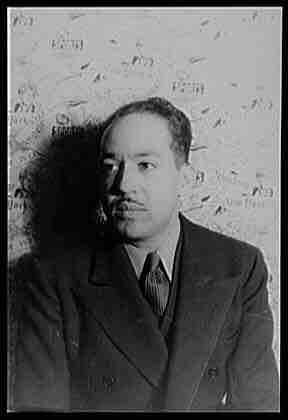The Harlem Renaissance was a cultural movement that spanned the 1920s and 1930s. It sprang up as part of the "New Negro Movement," a political movement founded in 1917 and later named after the 1925 anthology by Alain Locke. Though the Harlem Renaissance was centered in the Harlem neighborhood of New York City, many French-speaking black writers from African and Caribbean colonies who lived in Paris were also influenced by the Renaissance. The zenith of this "flowering of Negro literature," as James Weldon Johnson preferred to call the Harlem Renaissance, was placed between 1924 and 1929.
New Negro Movement
"New Negro" was a term used in African-American discourse, beginning in 1895 and lasting for the first three decades of the 20th century, to characterize an outspoken advocacy of dignity and a refusal to submit quietly to the practices and laws of Jim Crow racial segregation. Popularized by writer and philosopher Alain LeRoy Locke, the New Negro concept received its greatest attention during the peak years, about 1917 to 1928, when it became better known as the Harlem Renaissance.
For African-Americans, World War I highlighted the widening gap between U.S. rhetoric regarding "the war to make the world safe for democracy," and the reality of disenfranchised and exploited black farmers in the South or the poor and alienated residents of northern slums. In France black soldiers experienced the kind of freedom they had never known in the United States, but returned to find that discrimination against blacks was just as active as it was before the war. Many African-American soldiers who fought in segregated units during World War I, like the Harlem Hellfighters, came home to a nation whose citizens often did not respect their accomplishments.
In 1916-17, Hubert Harrison and Negro League baseball star Matthew Kotleski founded the "New Negro" movement, which energized the African-American community with race- and class-conscious demands for political equality, an end to segregation and lynching, as well as calls for armed self-defense when appropriate.
In a 1925 anthology, The New Negro, which grew out of the 1924 special issue of Survey Graphic on Harlem, editor Alain Locke contrasted the "Old Negro" with the "New Negro" by stressing African-American assertiveness and self-confidence during the years following World War I and the Great Migration. Race pride had already been part of literary and political self-expression among African-Americans in the 19th Century. However, it found a new purpose and definition in the journalism, fiction, poetry, music, sculpture, and paintings of many figures associated with the Harlem Renaissance.
Alain Locke
A portrait of Alain LeRoy Locke, leader of the New Negro Movement and inspirational figure of the Harlem Renaissance.
No one better articulated the hopes and possibilities associated with the idea and ideal of the "New Negro" than the Harvard-trained philosophy professor Alain LeRoy Locke, who later described himself as the "midwife" to aspiring young black writers of the 1920s. According to Locke, The New Negro, whose publication by Albert and Charles Boni in December 1925 symbolized the culmination of the first stage of the New Negro Renaissance in literature, was assembled "to document the New Negro culturally and socially – to register the transformations of the inner and outer life of the Negro in America that have so significantly taken place in the last few years." Highlighting its global scope, Locke compared the New Negro movement with the "nascent movements of folk expression and self-determination" that were taking place internationally.
Despite the challenges of race and class in the 1920s, a new spirit of hope and pride marked black activity and expression in all areas. The New Negro movement insisted on self-definition, self-expression and self-determination, striving after what Locke called "spiritual emancipation." The Harlem Renaissance participants who emerged from this new idealism, regardless of their generational or ideological orientation in aesthetics or politics, shared a sense of possibility. The many debates regarding art and propaganda, representation and identity, assimilation versus militancy, and parochialism versus globalism enriched perspectives on issues of art, culture, politics, and ideology that have emerged in African-American culture.
Origins of the Renaissance
During the early portion of the 20th Century, Harlem became home to a growing "Negro" middle class. In 1910, a large block along 135th Street and Fifth Avenue was purchased by various African-American realtors and a church group. Many more African-Americans arrived during World War I. Due to the war, the migration of laborers from Europe virtually ceased, while the war effort resulted in a massive demand for unskilled industrial labor. The Great Migration brought hundreds of thousands of African-Americans from the South to cities like Chicago, Philadelphia, Cleveland, and New York. Among them were a great number of artists whose influence would come to bear, especially in Jazz music.
Despite the increasing popularity of Negro culture, virulent white racism, often by more recent ethnic immigrants, continued to impact African-American communities. Race riots and other civil uprisings occurred throughout the United States during the so-called Red Summer of 1919, reflecting economic competition over jobs and housing in many cities, as well as tensions over social territories.
Theatre
The first stage of the Harlem Renaissance started in the late 1910s, notably with the 1917 premiere of Three Plays for a Negro Theatre. These plays, written by white playwright Ridgely Torrence, featured African-American actors conveying complex human emotions and yearnings. They rejected the stereotypes of the blackface and minstrel show traditions. James Weldon Johnson in 1917 called the premieres of these plays "the most important single event in the entire history of the Negro in the American Theater."
Literature
In 1917 Hubert Harrison, "The Father of Harlem Radicalism," founded the Liberty League and The Voice, the first organization and the first newspaper, respectively, of the "New Negro Movement." Harrison's organization and newspaper were political, but also emphasized the arts, with his newspaper including "Poetry for the People" and book review sections. In 1927, in the Pittsburgh Courier newspaper, Harrison challenged the notion of the renaissance. He argued that the "Negro Literary Renaissance" notion overlooked "the stream of literary and artistic products which had flowed uninterruptedly from Negro writers from 1850 to the present," and said the so-called "renaissance" was largely a white invention. It is true that W. E. B. Du Bois' had introduced the notion of "twoness" in his 1903 book, The Souls of Black Folk, which explored a divided awareness of one's identity that was a unique critique of the social ramifications of racial consciousness. This work preempted the Harlem Renaissance, but also undoubtedly offered some degree of inspiration and fodder for its writers.
The works of the Harlem Renaissance appealed to a wide audience and marked a proliferation of African-American cultural influence, with magazines such as The Crisis, the journal of the National Association for the Advancement of Colored People (NAACP) and Opportunity, the publication of the National Urban League, both employing Harlem Renaissance writers on their staffs, while white-owned publishing houses and magazines also supported the movement. Many authors began to publish novels, magazines and newspapers during this time. Notable Harlem Renaissance figures included Locke, Langston Hughes, Zora Neale Hurston, Arna Bontemps, Nella Larson, Wallace Thurman, and Countee Cullen, Jessie Fauset, Claude McKay, Zora Neale Hurston, James Weldon Johnson, Jean Toomer, Alain Locke, and Eric D. Walrond.

Zora Neale Hurston
Author Zora Neale Hurston, best known for her novel, Their Eyes Were Watching God, was one of the literary luminaries of the Harlem Renaissance.
Music
A new way of playing the piano, called the Harlem Stride Style, emerged during the Harlem Renaissance and helped blur the lines between poor Negros and socially elite Negros. The traditional Jazz band was composed primarily of brass instruments and considered a symbol of the South, but the piano was considered an instrument of the wealthy. With this instrumental modification to the existing genre, wealthy African-Americans now had more access to Jazz music. Its popularity soon spread throughout the country and reached an "all-time high." Innovation and liveliness were important characteristics of performers in the beginnings of Jazz. Musicians at the time including Fats Waller, Duke Ellington, Jelly Roll Morton, and Willie "The Lion" Smith showed great talent and competitiveness and were considered to have laid the foundation for future musicians of their genre.
During this time period, the musical style of blacks was becoming more and more attractive to whites. White novelists, dramatists and composers started to exploit the musical tendencies and themes of African-Americans in their own works. Composers used poems written by African-American poets in their songs, while implementing the rhythms, harmonies and melodies of African-American music, such as Blues, Spirituals and Jazz, into their concert pieces. African-Americans also began to merge with white artists in the classical world of musical composition, which had long been popular among white audiences, especially the middle-class and wealthy with roots going back to Europe where classical music had been dominant for centuries.
Patronage
The Harlem Renaissance rested on a support system of black patrons, black-owned businesses and publications. Yet it also received a great deal of patronage from white Americans such as writer and photographer Carl Van Vechten and philanthropist Charlotte Osgood Mason, who provided various forms of assistance, opening doors which otherwise would have remained closed to the publication of work outside the African-American community. This support often took the form of patronage or publication. There were other whites interested in so-called "primitive" cultures, as many viewed black American culture at that time, and wanted to see such "primitive" influences in the work coming out of the Harlem Renaissance.
Carl Van Vechten
Writer and photographer Carl Van Vechten was one of the white patrons and proponents of the Harlem Renaissance.
Impact
The Harlem Renaissance helped lay the foundation for the post-World War II phase of the Civil Rights Movement. Moreover, many black artists who rose to creative maturity afterward were inspired by this literary movement. The Harlem Renaissance was more than a literary or artistic movement, it possessed a certain sociological development—particularly through a new racial consciousness—through racial integration, as seen in the Back to Africa movement led by Marcus Garvey.

Langston Hughes, photographed by Carl Van Vechten, 1936
Langston Hughes was a prominent novelist and poet who emerged from the Harlem Renaissance.